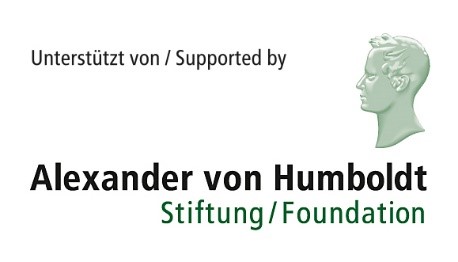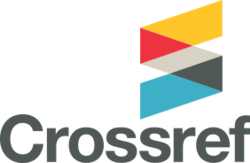Compliance in competition law
DOI:
https://doi.org/10.46941/2025.se1.3Keywords:
competition law, corporate compliance, ex-ante and ex-post prevention, deterrence, fine reductions.Abstract
This study aims to examine the operation of competition law compliance from two perspectives. First, it examines how competition regulation's compliance mechanism works from the perspective of promoting compliance. Subsequently, it highlights the difficulties associated with corporate competition compliance. Furthermore, it describes how to avoid automatic fine reduction while recognizing compliance efforts.
References
Barennes, M., Wolf, G. (2011) ‘Cartel Recidivism in the Mirror of EU Case Law’, Journal of European Competition Law & Practice, 2(5), pp. 423-440.
Beckenstein, A. R., Gabel, H. L. (1982) ’Antitrust Compliance’, Antitrust Law Journal, Vol. 51, pp. 459-516.
Bernile, G., Bhagwat, V. (2017) ‘What Doesn’t Kill You Will Only Make You More Risk-Loving: Early-Life Disasters and CEO Behavior’, The Journal of The American Finance Association, Vol. 72, pp. 167-206.
Broulı́k, J. (2019) ‘Preventing anticompetitive conduct directly and indirectly: accuracy versus predictability’, Antitrust Bulletin, 64(1), pp. 115-127.
Combe, E., Monnier, C., Legal, R. (2008) ‘Cartels: the Probability of Getting Caught in the European Union’, Working Paper PRISM-Sorbonne.
Combe, E., Monnier, C. (2020) ‘Why Managers Engage in Price Fixing? An Analytical Framework’, World Competition, 43(1), pp. 35-60.
Davies, S., Mariuzzo, F., Ormosi, P. L. (2017) ‘Quantifying the Deterrent Effect of Anti-Cartel Enforcement’. [Online]. Available at: https://ssrn.com/abstractĽ2520014 (Accessed: 15 March 2021).
Feinberg, R. M. (1985) ’The Enforcement and Effects of European Competition Policy: Results of a Survey of Legal Opinion’, Journal of Common Market Studies, Vol. 23, pp. 373-384.
Gal, M. (2000) ‘Harmful Remedies: Optimal Reformation of Anticompetitive Contracts’, Cardozo Law Review, Vol. 22, pp. 91-132.
Geradin, D. (2013) ‘Antitrust Compliance Programmes & Optimal Antitrust Enforcement: A Reply to Wouter Wils.’, Journal of Antitrust Enforcement, pp. 325-346. [Online]. Available at: https://ssrn.com/abstract=2241452 (Accessed: 26 April 2023).
Hawk, B. E., Denaeijer, N. (2000) ’The Development of Articles 81 and 82: Legal Certainty’, in Ehlermann, C. D., Atanasiu, I. (eds.) European Competition Law Annual 2000. Oxford: Hart Publishing.
Huizing, P. J. F. (2020) ‘Proportionality of Fines in the Context of Global Cartel Enforcement’, World Competition Law and Economic Review, 43(1), pp. 61-86.
Moncuit, de G. (2020),’Relevance and Shortcomings of Behavioural Economics in Antitrust Deterrence’, Journal of European Competition Law & Practice, Vol. 11, No. 5-6, p. 56., pp. 230-236.
PaRR (2018). PaRR Statistics: One-third of EC commitment decisions in the energy sector. Available at: https://app.parr-global.com/intelligence/view/prime-2601673?src¬¬_alert_id=117053 (Accessed: 26 April 2023).
Seldeslachts, J., Clougherty, J. A., Pita Barros, P. L. (2007) ‘Remedy for Now but Prohibit for Tomorrow: The Deterrence Effects of Merger Policy Tools’, WZB, Markets and Political Economy Working Paper, No. SPII 2007-02. [Online]. Available at: https://ssrn.com/abstract=1009135 (Accessed: 15 March 2021).
Smuda, F. (2021) ’Cartels and Fines’, in Whelan, P. (ed.) Research Handbook on Cartels. United Kingdom: Edward Elgar Publishing.
Sokol, D. (2012) ‘Cartels, Corporate Compliance, and What Practitioners Really think About Enforcement’, Antitrust Law Journal, Vol. 78, pp. 217–218.
Spagnolo, G. (2000) ’Optimal Leniency Programs’, Working Paper-Fondazione Eni Enrico Mattei. [Online]. Available at: https://papers.ssrn.com/sol3/papers.cfm?abstract_id=235092 (Accessed: 26 April 2023).
Sparrow, K. M. (2000) The Regulatory Craft: Controlling Risks, Solving Problems, and Managing Compliance. Washington, D.C.: Brookings Institution Press.
Thépot, F. (2016) ‘Can Compliance Programmes Contribute to Effective Antitrust Enforcement?’, in Paha, J. (ed.) Competition Law Compliance Programs? An Interdisciplinary Approach. New York City: Springer International Publishing, pp. 5-6.
Tirole, J. (2004) ‘Telecommunication and competition’, in Buigues, P. A., Rey, P. (eds.) The economics of antitrust and regulation in telecommunication. United Kingdom: Edward Elgar Publishing.
Tóth, A. (2016) ’The Use of Leniency Policy in Cartel Cases’ (Speech at the Taiwan International Conference on Competition Policy/Law Strategies of Competition Policy in the Global and Digital Economy, Fair Trade Commission. Taipei, Taiwan June 28 – 29, 2016).
Viscusi, W. K., Harrington, J. E., Vernon, J. M. (2005) Economics of regulation and antitrust. Cambridge: The MIT Press.
Wils, W. P. J. (2012) ‘Recidivism in EU antitrust enforcement: A legal and economic analysis’, World Competition, 35(1). [Online]. Available at: https://ssrn.com/abstract=1957088 (Accessed: 26 April 2023).
European Commission (2017) Report of the European Commission on Competition Policy 2016. [Online]. Available at:
http://ec.europa.eu/competition/publications/annual_report/2016/part1_en.pdf (Accessed: 26 April 2023).
ICN: Report to the 7th ICN Annual Conference, Setting of Fines for Cartels in ICN Jurisdictions, Kyoto, (2008).





